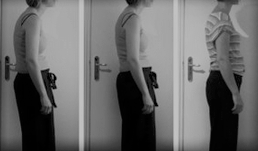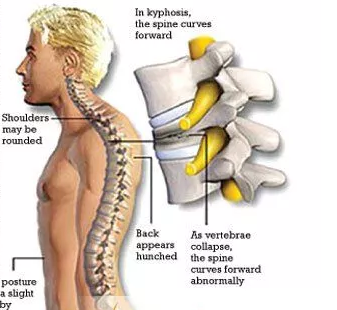
The Red Light Reflex
Understanding Its Impact on Posture, Breathing, and Well-being
Based on the Work of Thomas Hanna and Moshe Feldenkrais
The Red Light Reflex is an automatic startle response designed to protect the body in moments of perceived danger or distress. It activates the muscles in the front of the body, causing the shoulders to hunch, the chest to collapse, the head to pull forward, and the feet and knees to rotate inward. This reflex is deeply embedded in the nervous system of all vertebrates and serves as an instinctive reaction to fear, stress, and prolonged emotional tension.
Triggers of the Red Light Reflex

This reflex is activated by both sudden and long-term stressors, such as:
✔ Loud noises or unexpected stimuli
✔ Emotional trauma, anxiety, or chronic fear
✔ Long hours of sitting, especially at a desk or computer
✔ Enduring stress, negativity, or mental burden
The result is a slouched, protective posture that, when sustained, reinforces physical discomfort and psychological distress.
A Reflex Rooted in Modern Society
Like the Green Light Reflex, the Red Light Reflex is increasingly common in Western, industrialized societies, where sedentary lifestyles, work-related stress, and digital device usage contribute to habitual slouching.

Over time, the body adapts to this posture, making it the default stance, even in situations where it is no longer necessary. When this reflex becomes chronic, it leads to muscular imbalances, pain, and functional impairments.
Physical and Physiological Consequences
A continuously activated Red Light Reflex can contribute to:
✅ Neck pain, jaw tension (TMJ), and headaches
✅ Buffalo hump (fatty deposit at the base of the neck and upper back)
✅ Hip pain, back pain, and postural misalignment
✅ Shallow breathing and reduced lung capacity
However, the effects go beyond the musculoskeletal system—this reflex has a profound impact on breathing, the nervous system, and overall health.
The Breathing Cycle and the Nervous System
The constricted posture caused by the Red Light Reflex limits ribcage expansion and diaphragm movement, leading to chronic shallow breathing and, in many cases, mild but constant hyperventilation. The consequences include:
🔹 Increased heart rate and loss of sinus arrhythmia (heart rate variability)
🔹 Shift in autonomic control from the parasympathetic (“rest and digest”) to the sympathetic (“fight or flight”) nervous system
🔹 A constant state of physiological stress, triggering symptoms such as:
- Digestive disturbances
- Cardiac arrhythmia
- Insomnia and poor sleep quality
- Dry mouth and difficulty swallowing
- Bladder dysfunction and abnormal sweating
- Unstable internal body temperature
- Impaired pupillary response and light sensitivity
The Psychological Connection: Stress, Anxiety, and Fatigue
Most people mistakenly accept these symptoms as part of aging or associate them solely with psychological conditions. However, they are often directly linked to poor breathing and chronic muscular tension.
When breathing is restricted, the body and brain receive less oxygen, leading to:
✔ Fatigue and low energy
✔ Heightened anxiety and stress
✔ Depression and mood imbalances
✔ Exacerbation of allergies and immune dysfunction
Pain, discomfort, and mental distress are often warning signs, not inevitable consequences of aging. They serve as invitations to restore balance and realign movement patterns.
Reversing the Red Light Reflex: Reintegrating the Front Body
The key to neutralizing this reflex is to increase awareness and mobility in the front-body muscles, which are often unconscious or habitually tightened. Through specific somatic exercises, individuals can:
✔ Restore natural postural balance
✔ Improve lung capacity and breath efficiency
✔ Re-engage the parasympathetic nervous system, reducing chronic stress
✔ Modify hormonal secretion via cranial nerve stimulation
Breathing: The Key to Undoing Chronic Stress Patterns
Breathing is the foundation of life, directly influencing both physical function and emotional well-being. By restoring ease in breath, we initiate a cascading effect that resets the nervous system, relieves stress, and enhances overall health.
With proper movement re-education, the body and brain can unlearn the chronic contraction patterns of the Red Light Reflex, allowing individuals to move freely, breathe fully, and live with greater ease and vitality.